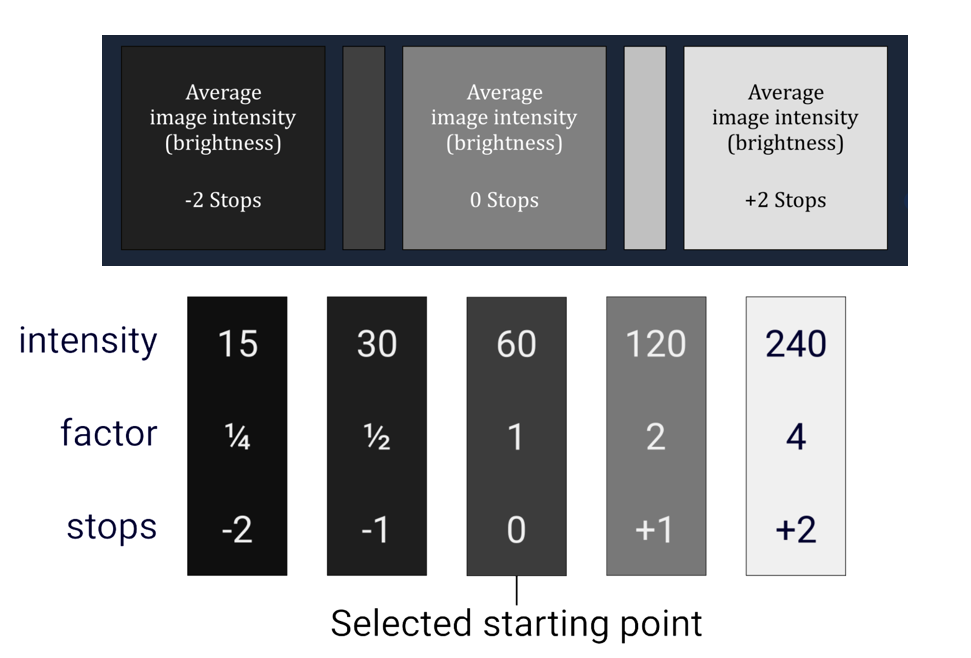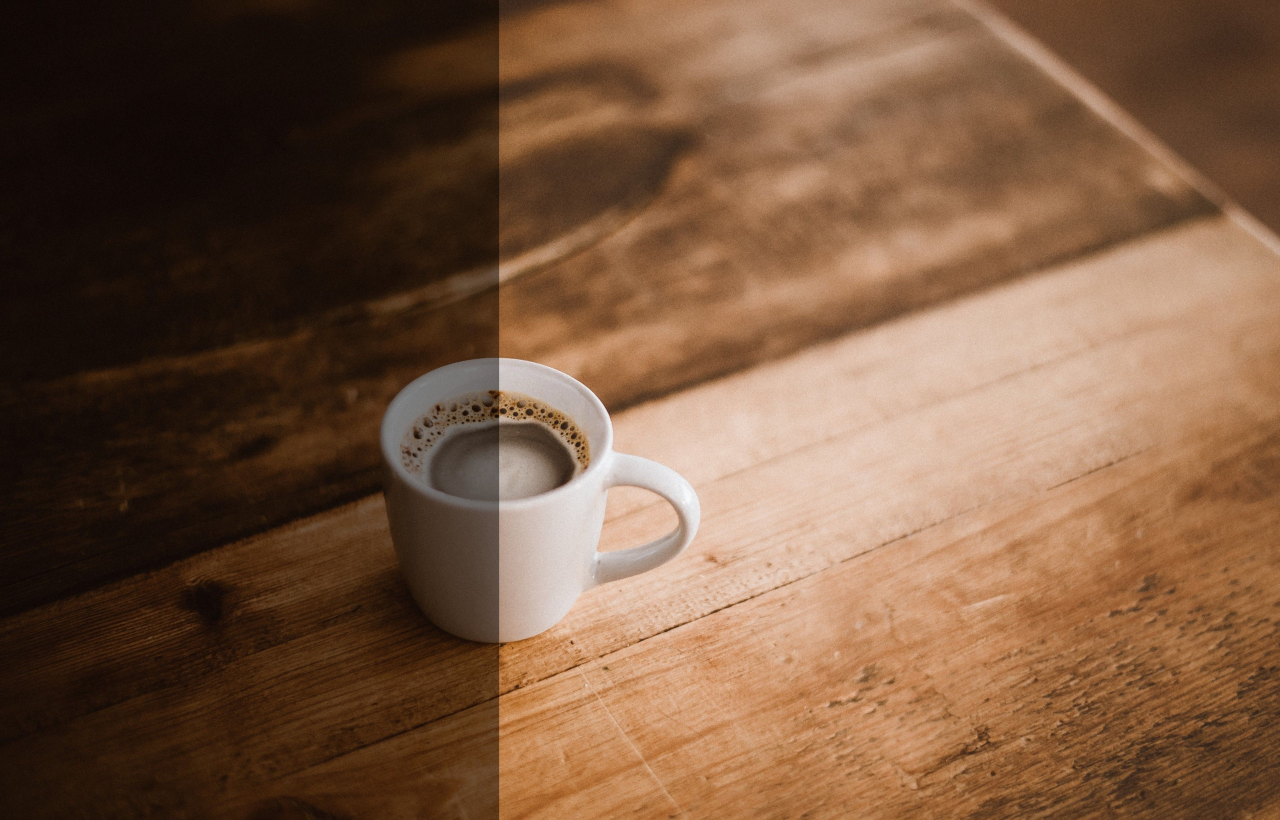Introduction to Stops
Introduction
사진에서 “stops” (또는 “exposure stops”)이라는 용어는 카메라 센서에 도달하는 빛의 양과 기준점을 기준으로 한 이미지의 밝기 수준을 설명하는 데 사용됩니다. 이 기준점은 종종 “0 stops” 이라고 합니다.
한 단계 올리면 이미지의 밝기가 두 배가 됩니다.
한 단계 낮추면 밝기가 절반으로 줄어듭니다.
카메라가 처리할 수 있는 총 스톱 수는 빛의 강도를 두 배 또는 반으로 줄일 수 있는 횟수에 따라 달라집니다. 이는 카메라의 다이내믹 레인지와 관련이 있는데, 다이내믹 레인지는 카메라가 장면에서 매우 어두운 영역과 매우 밝은 영역을 얼마나 잘 포착하는지를 측정합니다. 예를 들어, Zivid 카메라는 약 23스톱의 다이내믹 레인지를 제공하여 반사되는(반사되는) 물체를 촬영할 때에도 고품질 데이터를 캡처할 수 있습니다.
Stops in Practice
정지의 실제 의미를 이해하기 위해 예를 살펴보겠습니다.

0에서 255까지의 범위에서 밝기(또는 강도)를 측정하는 카메라 센서를 상상해 보세요. 벽을 촬영하고 있고, 이미지의 평균 밝기가 60이라고 가정해 보세요. 노출을 stops으로 변경하면 밝기에 어떤 영향이 미치는지 살펴보겠습니다.
노출을 1단계 증가시킵니다. 밝기가 120으로 두 배가 됩니다.
노출을 2단계 증가시킵니다. 밝기가 다시 두 배로 늘어나 240이 됩니다.
노출을 1단계 낮추면 밝기가 절반으로 줄어들어 30이 됩니다.
노출을 2단계 감소시킵니다. 밝기는 다시 절반으로 줄어들어 15가 됩니다.
아래 이미지에서 노출 변경 효과를 확인할 수 있습니다. 이미지 왼쪽은 -2스톱 노출 부족 상태이고, 오른쪽은 적정 노출 상태입니다.

팁
직접 시도해보세요
Zivid 카메라와 Zivid Studio를 사용하여 정지 화면을 다양하게 실험해 보세요. 다음 단계를 따르세요.
카메라 시야에 종이 한 장을 놓으세요.
Zivid Studio를 열고 다음 2D 수집 설정을 지정합니다.
Aperture: 3.0 (skip for Zivid 3; its aperture is fixed)
Projector Brightness: 1.8
Gain: 1.0
마우스 커서를 이미지 위에 올려놓으세요. 컬러 이미지 보기의 왼쪽 하단 모서리에서 특정 픽셀의 RGB 값을 확인하세요.
Find an exposure time that gives an average RGB value of 60-70. Let’s say you find that 10000 ms works well.
설정을 조정하고 값이 어떻게 바뀌는지 관찰하세요.
Change the Exposure Time to 5000 and observe how the RGB value drops to 30-35 (halved, or 1 stop down).
Change the Exposure Time to 20000 and observe how the RGB value increases to 120-140 (doubled, or 1 stop up).
이 연습에서는 노출 stop이 측정 가능한 방식으로 이미지 밝기에 어떤 영향을 미치는지 보여줍니다.